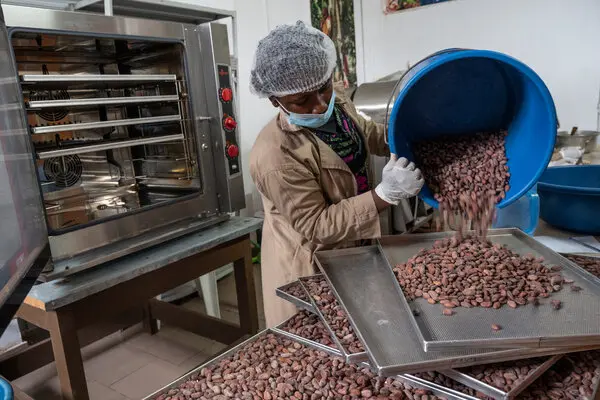Côte d’Ivoire shifts from exports to value creation
Côte d’Ivoire’s push for local cocoa processing aims to lift manufacturing to 15 % of GDP and narrow its current-account deficit below 1 %, testing investor sentiment across CC=F, BARN.SW and EMB as policy execution defines spread direction.

Côte d’Ivoire’s renewed emphasis on mandatory local processing of raw materials marks a strategic turn in West Africa’s largest cocoa economy. The policy—set against a GDP of roughly US$87 billion in 2025 (calendar year) and real growth near 6.4 per cent—targets structural transformation rather than cyclical expansion.
Public debt stands close to 58 per cent of GDP, inflation has eased to 3.4 per cent in September 2025 from 5.6 per cent a year earlier, and the fiscal deficit, projected at 4.0 per cent of GDP, keeps consolidation pressures intact. The government’s bet is that higher domestic value-addition will enlarge the tax base, narrow the current-account deficit of 2.5 per cent of GDP, and stabilise external buffers now covering about 4.9 months of imports.
Cocoa anchors this reorientation. Côte d’Ivoire produces roughly 2.1 million tonnes a year, about 40 per cent of global supply, but less than half is processed domestically. Installed grinding capacity of ≈ 730,000 tonnes—equivalent to 46 per cent of national output—has plateaued as plants face energy costs near US$0.13 per kilowatt-hour and logistics bottlenecks at Abidjan and San-Pédro ports. The policy now aims to lift domestic processing beyond 55 per cent by 2026 through tax incentives, export-licence quotas, and concessional credit. The intention is to compress the volatility of raw-bean earnings, expand formal employment, and retain margin within national accounts rather than in offshore refining centres.
Transmission channels are straightforward. First, the trade account: each 10-point increase in processed-export share could improve the goods balance by 0.8 percentage points of GDP, reducing FX-reserve drawdowns. Second, fiscal yield: VAT and corporate tax from manufacturing could lift revenue toward 14 per cent of GDP by 2027 from 13 per cent today, raising debt-servicing capacity as interest outlays reach 1.7 per cent of GDP. Third, labour and productivity: industrial employment, currently 18 per cent of the workforce, could absorb an additional 60,000 workers per year if utilisation climbs to 85 per cent. These adjustments collectively anchor medium-term stability without altering the BCEAO’s monetary stance—its policy rate of 3.25 per cent keeps real rates slightly negative, encouraging private investment under the CFA franc’s euro peg (XOF=EUR).
Financial markets interpret the directive through two lenses: opportunity and execution risk. Cocoa futures (CC=F) have risen 11 per cent year-to-date on weather-related supply tightness, but domestic processing expansion could dampen export volumes in the near term. Multinationals such as Barry Callebaut (BARN.SW) may benefit from lower origin-side costs and local partnerships, though margin compression is likely as value migrates onshore. For sovereign credit, diversification and export upgrading support spread compression of 30–50 basis points on the country’s Eurobond curve, reflected in indices tracked by EMB. Yet contingent liabilities from state-backed industrial funds could offset these gains if poorly ring-fenced.
Regionally, the initiative aligns with the African Union’s Agenda 2063 and the African Continental Free Trade Area’s drive for intra-African supply chains. Ghana pursues a parallel cocoa-processing expansion targeting 50 per cent domestic grind by 2027, creating a competitive benchmark. Investors therefore view Côte d’Ivoire’s policy as part of a continental industrial shift rather than an isolated experiment. Success depends on energy reliability, regulatory clarity, and traceability compliance with new EU deforestation rules; ≈ 80 per cent of Ivorian farmers are now registered, but complete coverage remains essential to preserve export premiums.
The test horizon is measurable. By end-2026, processed-export share should exceed 55 per cent and manufacturing value added rise to 15 per cent of GDP from 14.8 per cent. Tax-to-GDP should advance past 14 per cent, and the current-account deficit narrow below 1 per cent of GDP by 2027 if cocoa prices stabilise near US$3,600 per tonne. Eurobond spreads tightening toward 350 basis points over UST and sustained FX reserve coverage above five months would confirm credibility.
Failure to expand energy or port capacity would instead widen fiscal gaps and reprice risk premia upward. The country’s long-term competitiveness now rests on execution discipline—the capacity to convert resource dependence into industrial sovereignty within a defined policy window.





